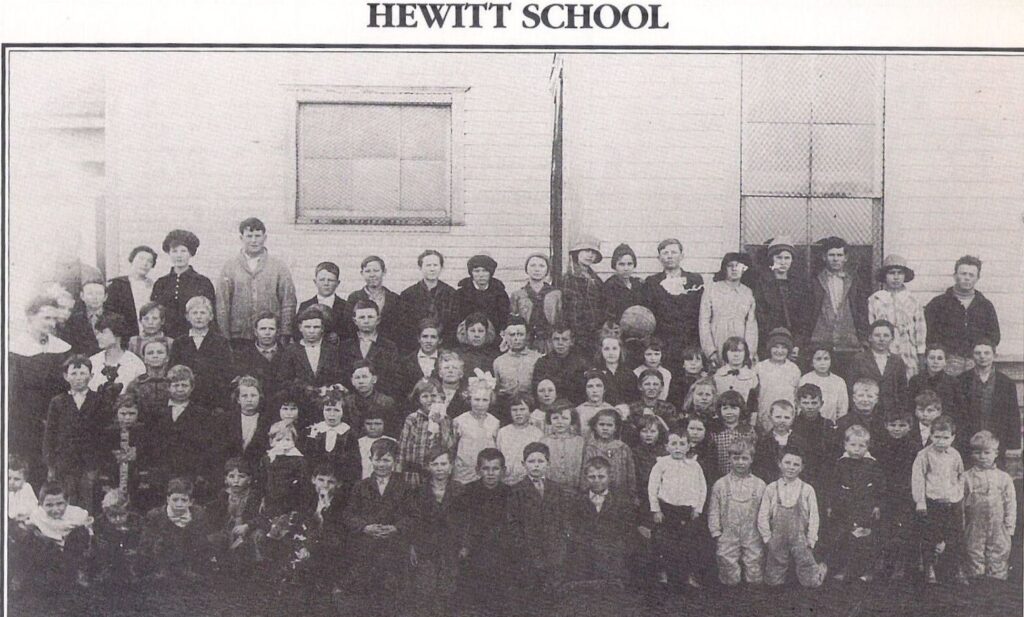
The Hewitt community in SW Carter county was named for Charles A. Hewitt, operator of a local sawmill and cotton gin, and by 1896 a post office was established. In the early years of the 20th century, cotton was the cash crop in the area. Corn was grown for food and also to feed livestock.
Oral history strongly suggests that a one-room school existed in Hewitt some 20 years before statehood (1907). G. V. Pardue reorganized the school for the 1909 to 1910 term as a two teacher school. A two-story frame building with a red roof was built. In 1911 the population of Hewitt had grown to 200.
A railroad from Ardmore to Ringling was built in 1914 that bypassed Hewitt. Many of the businesses and most of the settlers moved to the newly established town of Wilson located on the railroad. This was the beginning of the end for the rural independent Hewitt school. It did, however, form the nucleus for the Wilson school system.
The discovery of oil near Hewitt in 1919 change the economic status of the area. In 1921 the Hewitt field produced 11.4% of Oklahoma’s output of crude oil.
Note: I have searched high and low for the burial place of Charles Hewitt to no avail. One would assume he’d be buried in the Hewitt cemetery but I haven’t been able to verify that. Maybe some super sluthes out there can find his burial spot.
The Daily Ardmoreite
December 8, 1940
Trolley Cars Without Tracks Being Tried Out
E. Vance Nichols former Ardmore man hits on new idea
Traffic congestion is a problem that gives city officials a severe headache whenever the subject is called to their attention, and in most instances, that is all the time. Down at Dallas Texas a young man has hit up on an idea that may relieve traffic congestion and pave the way for a revolutionary system of trolley cars and buses. This young man is E. Vance Nichols, formerly of Ardmore where he lived for some time, and where the bug first bit him.
For several years he has been free lancing on traffic problems and has evolved a system of trackless trolley buses running on rubber tires that can be turned aside to permit the flow of traffic.
Operation of these buses is from an overhead trolley that is flexible that bends as the car moves in and out of traffic or pulls over to discharge or take on passengers.
Trackless trolleys have made credible showings in Shreveport, St Joseph, Portland Oregon, Brooklyn New York, and Chicago for a vote was taken that favored the trackless trolley system 8 to 1.
According to reports the system is to be tried out in Dallas in the near future and if it works and lives up to claims made for it, it may supersede all other traffic in that city, it is said.
Nichols was head of the advertising department for the local picture shows for a number of years.
Woodford Oklahoma (northern Carter county) circa 1903
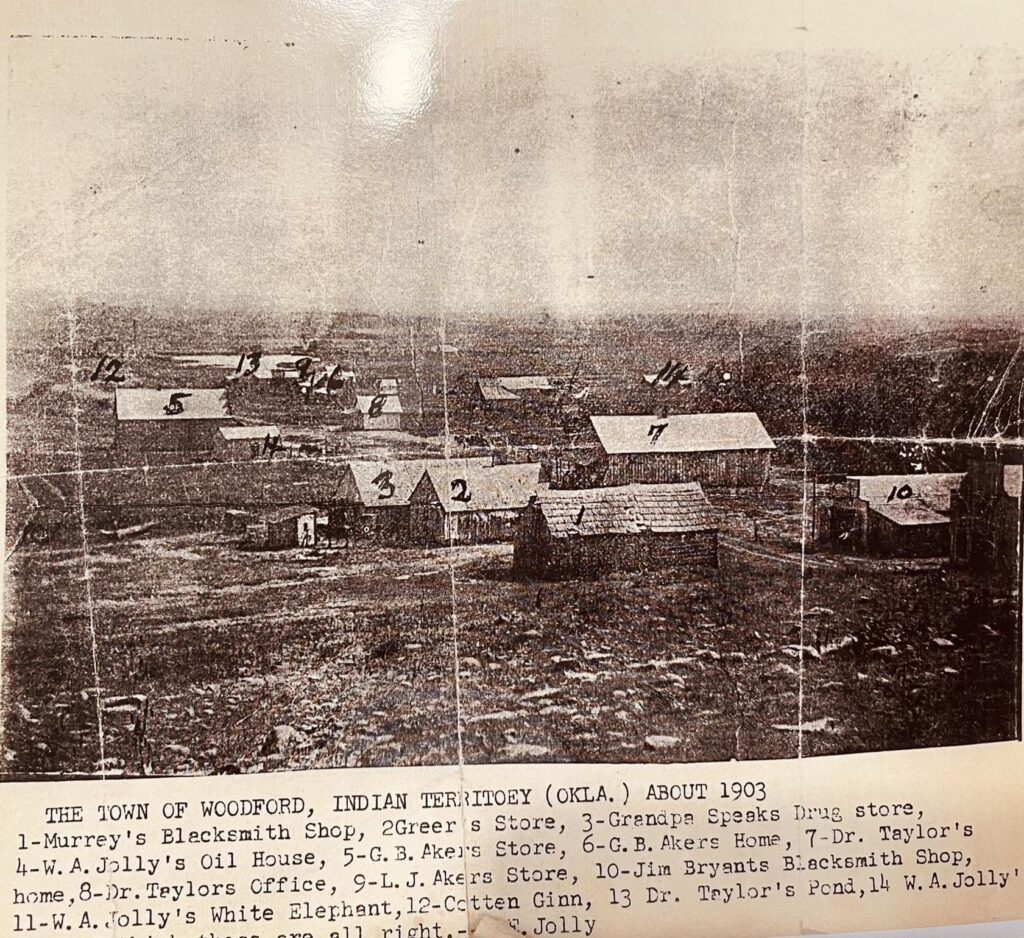
A couple brick pavers I sandblasted this week for the American Legion Post 99 at Madill, Oklahoma.
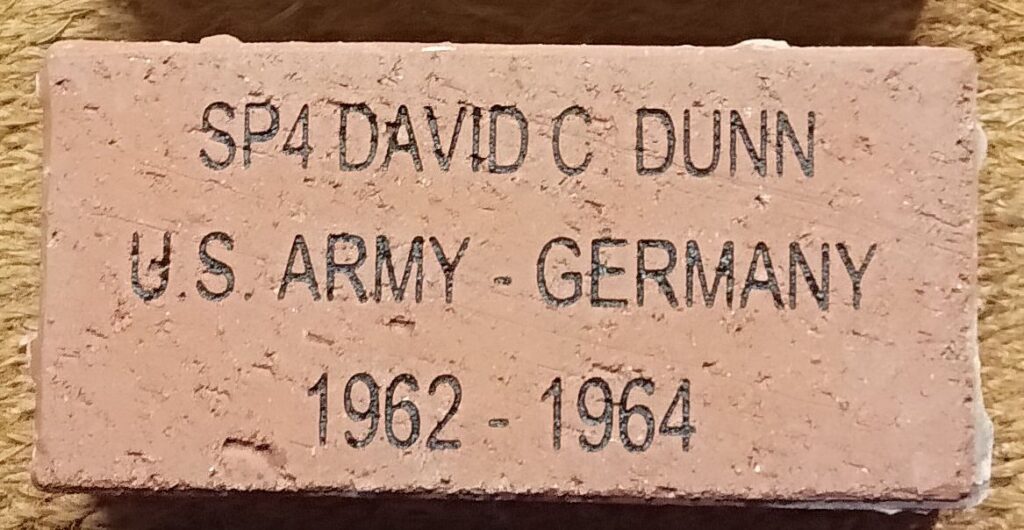
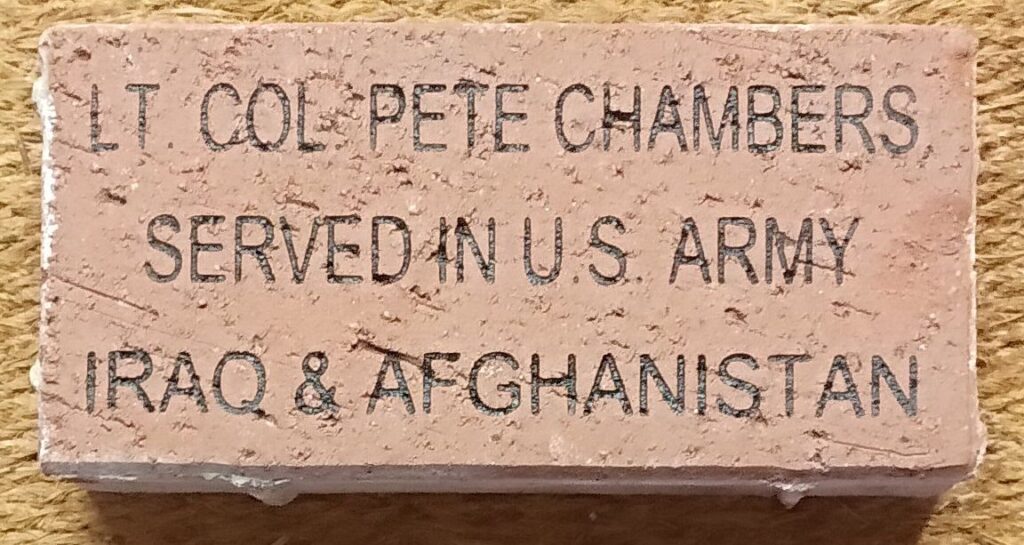
The Mailbag
Photo I took at Hot Springs Arkansas of the Mule Line shuttle c.1987. -Cecil Elliott
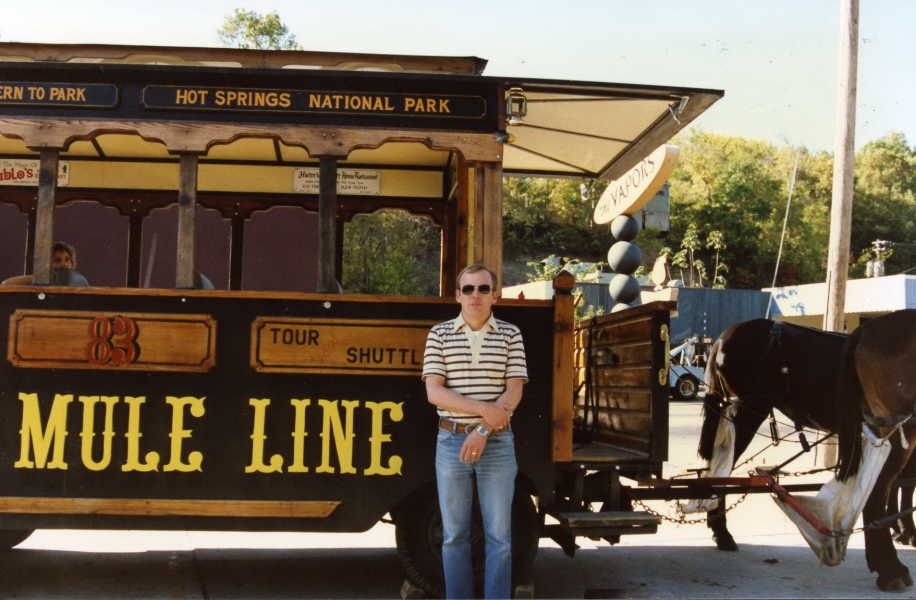
Note: In 1983 Marshall “Bud” Kenny built “The Mule Line” a 20-passenger trolley pulled by a team of mules providing tours of the historic district and Hot Springs National Park.
The newsletter stories remembering a novel blast from our past (streetcar bell) brought back my own remembrance of the longtime popular car noise maker, the Bermuda Bell. Back in the day I had one given to me by my Uncle Ivan, and it immediately became a much needed accessory to my college days’ hotrod. The distinctive loud ”ding dong” coming from my ride quickly became my calling-card, as I had the only one anybody in my age group knew about or had ever heard. Unless, of course, they happened to be from San Francisco. I just about wore that thing out stomping on that plunger that protruded up through my floorboard. The constant exposure to the elements plus the teenage wear & tear required my constant attention. After a rainstorm or driving through winter slush required the occasional unscrewing the bottom half to empty out the accumulated water. Then of course there would be the fine tuning to get that just right ”ding dong” at that just right volume (Loud). Being mounted to the underside of a car floorboard presents an obstacle problem, due to the diminished clearance to the road surface. This presented my biggest problem due to the constant ”hanging up” this thing going over curbs, railroad tracks, and the ever-present OKC potholes. The final nail to the streetcar bell coffin was when I tore it from underneath the car driving off the road during a drag race. I lost the race AND the bell. Not to mention the large gaping hole in my floorboard.
I shall always remember the joy that thing brought me during my youth. Most of all, I remember that loud, most distinctive > > ”DING – DONG”. -Steve Miller
Quilt Show At Wilson, Oklahoma
The Wilson Historical Society is having their second annual quilt show September 30th during their Fall Festival 10:00am to 4:00pm. if anyone would like to enter a quilt (old or new) drop it off at the museum Fridays and Saturdays 10:00 a.m. to 4:00 p.m. We are also taking chances on a quilt at $1 a chance. They can be purchased at the museum or at the bank in Wilson. Winner will be announced September 30th. Winner need not be present to win. By the way, quilt show is free. We had about 30 quilts last year and have made room for more this year. -Mindy Taylor
https://www.wilsonhistoricalmuseum.org/
The Daily Ardmoreite
September 5, 1932
Marshall County Underpass Will Be Constructed
Frisco and state to share expense on important crossing construction.
An order for the construction of an underpass south of Madill on Highway 70 under the Frisco railroad has been issued by the corporation commission. The underpass will cost approximately $18,500. It was reported the state will pay half the cost and the Frisco the balance of the expense, it was announced. Just at what point this is to be erected was not announced in the information received here. He indicated that the work would be started relatively soon.
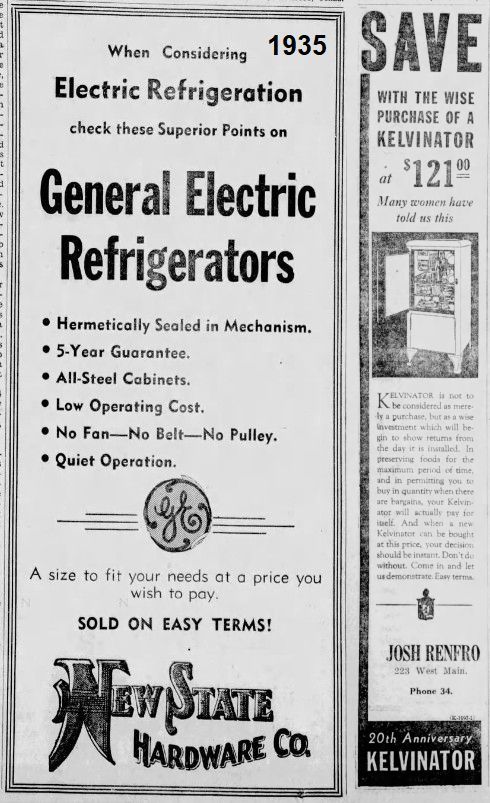
HAM Radio Talk KC5JVT via EchoLink
Not much going on the past week here in my HAM world. I did talk to Glenn In PA, we had quite a lenghty conversation. He just lives about 30 miles from where my great, great grandparents lived before moving to Oklahoma.
9/13/23 9:30pm WA3VHL Glenn in Allentwon, PA
Below is from my Vol 4 Issue 178 September 16, 2000 newsletter:
When I was traveling to Gene Autry, Oklahoma this week, I saw something that’s almost a thing of the past in this area. Someone had what was left of a garden from the 42 days of no rain, and he had a couple of scarecrows in that garden. The two scarecrows were made from paper mache, and looked pretty scary to me. I wonder if they scared off the rain clouds, and they are the reason we didn’t have any rain?
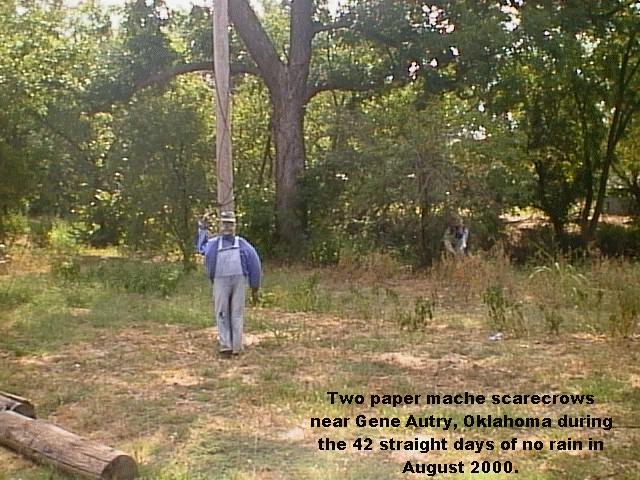
“In your last This & That, a lady wrote and ask the first name of the Highway Patrolman in the picture with Clyde McGill, Elmer Koscheski, (her dad) et al. The Highway Patrolman in the picture is Johnny Jones. I was the prosecutor in Love County when this picture was taken.” -Ken Bacon
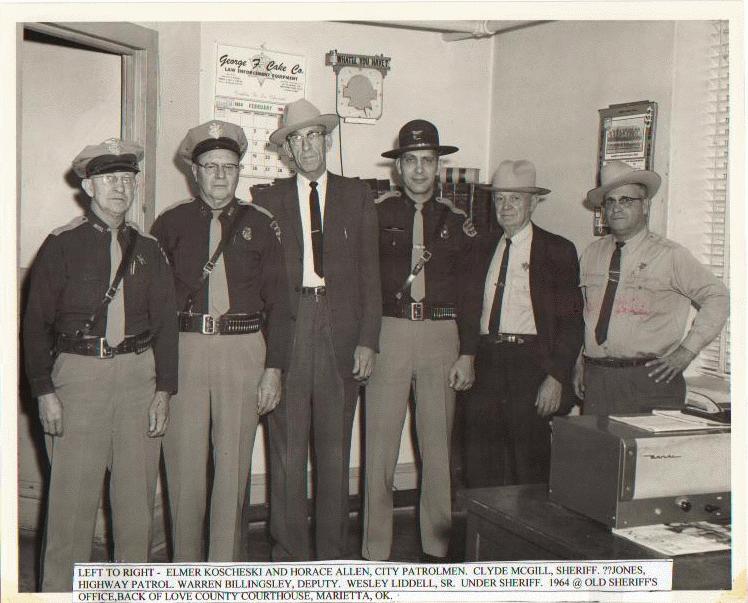
This is an historical account of the Governor Bill Murray’s stand off with Texas concerning the calling out of the National Guard in 1931 to dispel a problem (as he saw it) concerning the crossing of Red River across a toll bridge. Reference to: A History of The Sooner State BY Edwin McReynolds (1954,1964) page 364. “In spite of a federal court injunction obtained by toll-bridge operators at Red River crossings,Governor Murray succeeded in opening the free bridge between Denison, Texas and Durant, Oklahoma . Governor Ross Sterling of Texas, under authority of a ruling by Texas courts, proposed to barricade the Texas free-bridge entrance and to guard it with rangers. Murray called out an Oklahoma National Guard unit,ordered it to the bridge on U.S. Highway 69, claimed control of both ends of the structure, and opened it to the traffic on July 25, 1931.”
“Read on and learn how Governor Murray put Oklahoma under martial law and shut down all producing wells in Oklahoma because east Texas was producing so much oil that the price of oil had dropped to 15 cents a barrel. Governor Ross Sterling followed suit in Texas, and shut down the east Texas wells – soon the price of oil began an upward trend. In this case you will see that the two states worked together.” There is a book entitled “Oklahoma Heritage” by Sharon Cooper Calhoun and Billie Joan English (1984) that I recommend for a more colorful accounting of the so called “THE GREAT RED RIVER WAR” page 171. This book has an excellent accounting of all aspects of Governor Murray’s administration – I regard it as a “must read” if you are really interested in Oklahoma – particularly in its earlier days.” – Ernest Martin
“In a recent edition of This & That, a reader inquired about the location of Yellow Hills. According to OKLAHOMA PLACE NAMES by George H. Shirk, Yellow hills was in Carter County, 7 miles east of Ardmore. The Post office was established November 25, 1890. The name was changed to Durwood, September 11, 1891. On April 8, 1913, an other Post office was established a few miles east in Marshall County and designated New Durwood. Its name changed to Durwood on October 11, 1931. In 1926, the Post office was moved to Carter County.”
“What we become depends on what we read after all of the professors have finished with us. The greatest university of all is a collection of books.” -Thomas Carlyle 1795-1881
See everyone next week!
Butch and Jill Bridges
Ardmore, OK
580-490-6823
